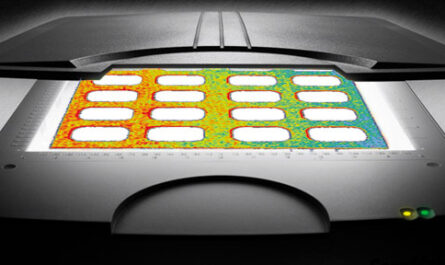What are Bioceramics?
Biochemical are ceramic materials that are used in medical applications where bone and tissue regeneration are involved. These include repair and replacement of bone, teeth, blood vessels and nerves. Biochemical have gained popularity in the field of medicine due to their ability to interact biologically with living systems. Their desirable properties include bioactivity, biocompatibility and osteoconductivity. This has revolutionized many medical procedures involving bone grafting and joint replacements.
Types of Bioceramics
There are three main types of biochemical used in medicine:
– Bioinert or non-resorbable ceramics include alumina and zirconia. They do not interact chemically with the body but are biocompatible and resistant to corrosion. Examples of uses are articulating components of prosthetic joints.
– Bioceramics include hydroxyapatite and glass ceramics. They bond to living bone through the formation of a carbonated hydroxyapatite layer on the material surface when in contact with physiological fluids. This makes them suitable for repairing bone defects.
– Bioresorbable or resorbable ceramics are made of calcium phosphates like tricalcium phosphate and hydroxyapatite. They gradually degrade and are replaced by new bone. This property enables them to be used as temporary bone void fillers and scaffolds for bone ingrowth.
Applications in Dental Care
Dental care has been a major beneficiary of Bioceramics technology. Ceramic materials are widely used for dental crowns, bridges, dental implants and veneers due to their aesthetic appeal resembling natural tooth structure. Zirconia based ceramics have become popular for dental crowns and frameworks in the last decade because of their superior strength and ability to mimic tooth stiffness. Calcium phosphates like tricalcium phosphate and hydroxyapatite are commonly employed as bone graft substitutes and filling materials during dental procedures. Their bioactivity promotes osseointegration of dental implants.
Use in Bone Repair and Regeneration
Biochemical are steadily gaining recognition for repair and regeneration of bone tissue. Important areas where they contribute include spinal fusion, maxillofacial reconstruction and treatment of bone fractures that are non-unions. Bioactive biochemical have been found to stimulate new bone formation when implanted at defective sites. Their gradual degradation is replaced by natural bone, restoring the defect. As bioresorbable temporary scaffolding, they guide the regeneration process. Another strategy uses bioceramic coatings on metal implants to elicit a bioactive response promoting stronger bone bonding. This enhances implant integration with bone.
Adding Function to Joint Replacements
One of the pioneering uses of biochemical has been in total hip and knee replacements. The articulating surfaces are typically made of highly wear-resistant ceramics like alumina or zirconia ceramic-on-ceramic or ceramic-on-polyethylene combinations. This provides improved life compared to metal-on-metal or metal-on-polyethylene designs by minimizing wear debris-induced osteolysis. Bioceramic composite coatings are now being researched to impart additional bioactivity to hip and knee prostheses for better osseointegration. In the future, coatings releasing drugs and growth factors may further enhance implant fixation in bone. Other efforts focus on regenerating cartilage using bioceramic scaffolds.
Role in Cardiovascular Applications
Bioceramic technology also enables fabrication of small diameter vessels or scaffolds for vascular grafting. Calcium phosphate biochemical are being explored as coatings on synthetic vascular grafts to promote cell growth, accelerate tissue ingrowth and eventual remodeling. These “bioactive vascular grafts” demonstrate potential to overcome current limitations of synthetic grafts. Another application involves coating stents with ceramic drug reservoirs for localized and sustained drug delivery to prevent restenosis post angioplasty. Promising preclinical results have been obtained using rapamycin eluting bioceramic coatings.
Future Opportunities
As bioceramic chemistry and processing continue to refine, new opportunities will emerge. Areas attracting research interest include bioceramic bone cements, scaffolds and composites for improved bone regeneration. The ability to tune composition and integrate biological cues like growth factors holds promise. Bioceramic assisted delivery of cell and gene therapies may help regenerative medicine become a clinical reality. In the longer term, the focus may shift to engineering whole organs and tissues by combining cells, scaffolds and biomolecules. With advanced capabilities in material synthesis and an expanded knowledge of cell-material interactions, biochemical are set to transform healthcare through regenerative solutions.
biochemical have significantly broadened therapeutic options available to medicine, particularly for repairing and replacing bone, dental structures and articulating surfaces. Their bioactivity and ability to integrate with living systems underpins this widespread use. Continuous innovation is further expanding applications from orthopedics to cardiovascular interventions. Biochemical thus provide an remarkable technology platform for engineering solutions across a range of clinical specialities.
About Author:
Ravina Pandya, Content Writer, has a strong foothold in the market research industry. She specializes in writing well-researched articles from different industries, including food and beverages, information and technology, healthcare, chemical and materials, etc. (https://www.linkedin.com/in/ravina-pandya-1a3984191)
*Note:
1. Source: Coherent Market Insights, Public Source, Desk Research
2. We have leveraged AI tools to mine information and compile it.



